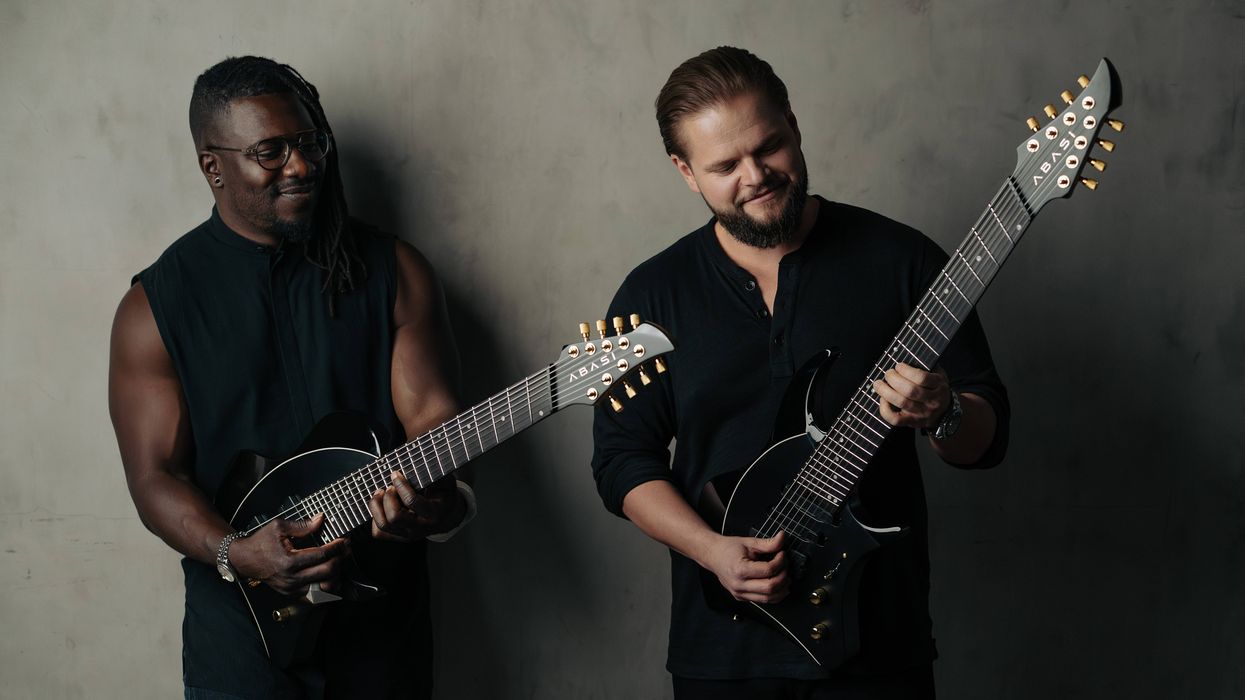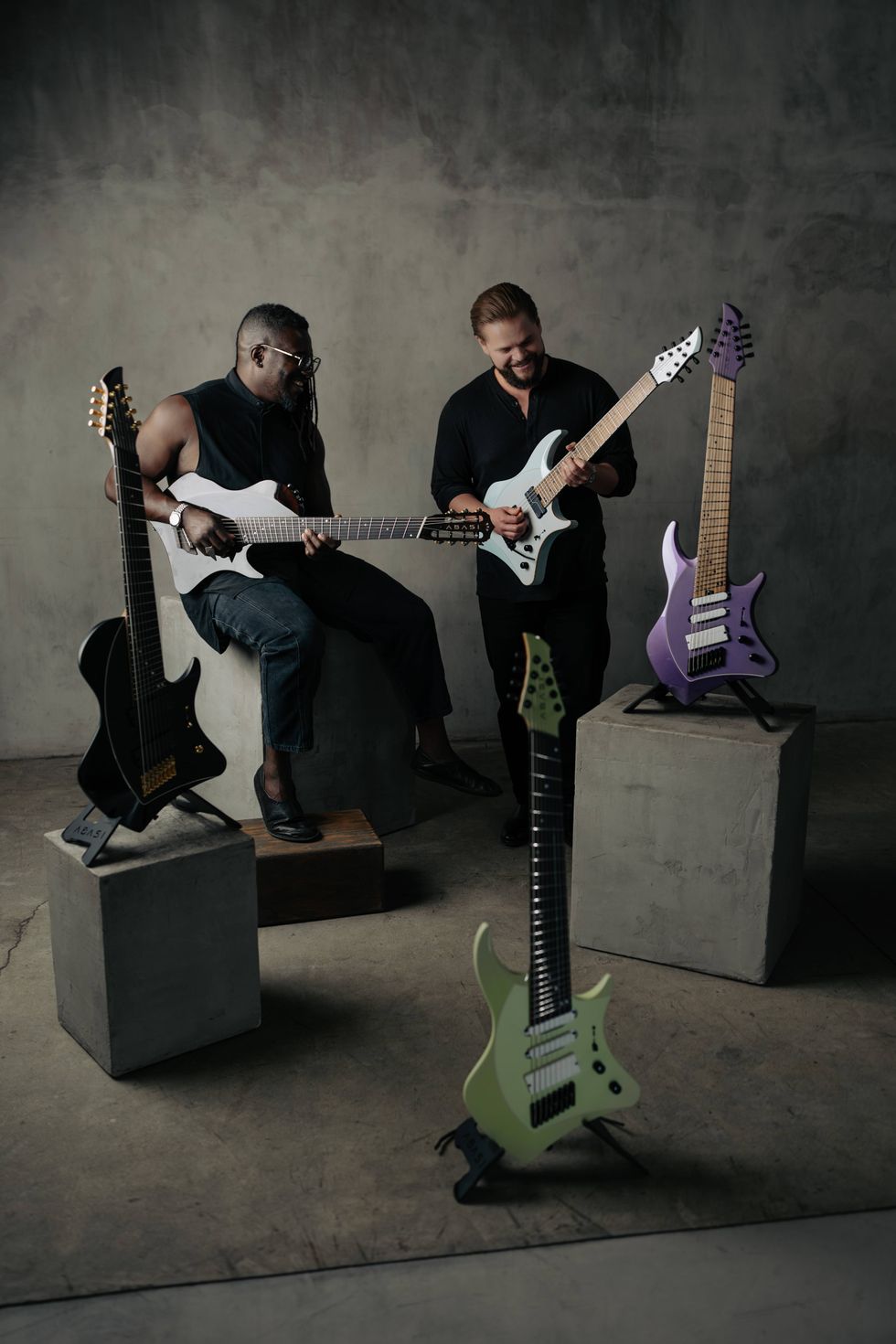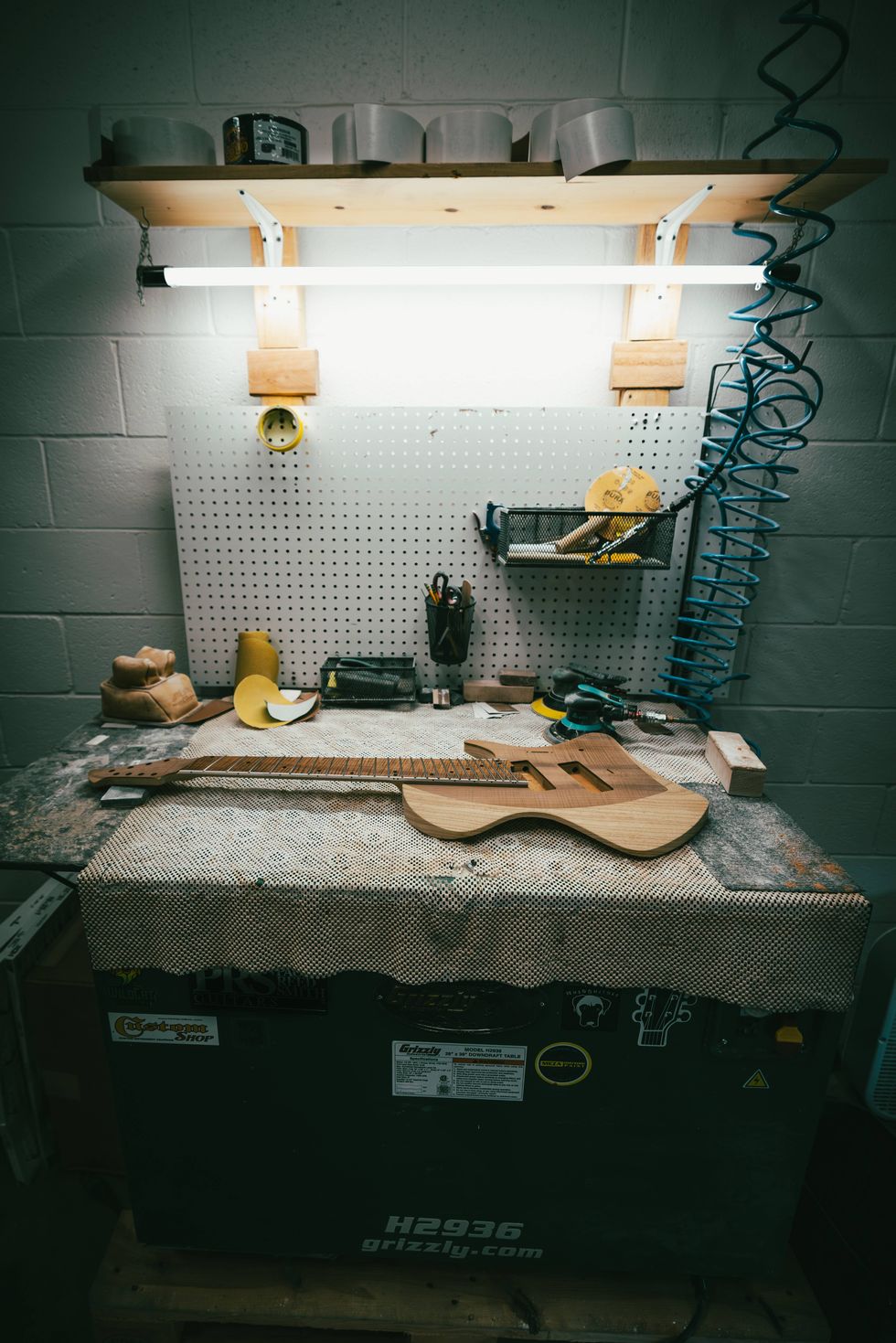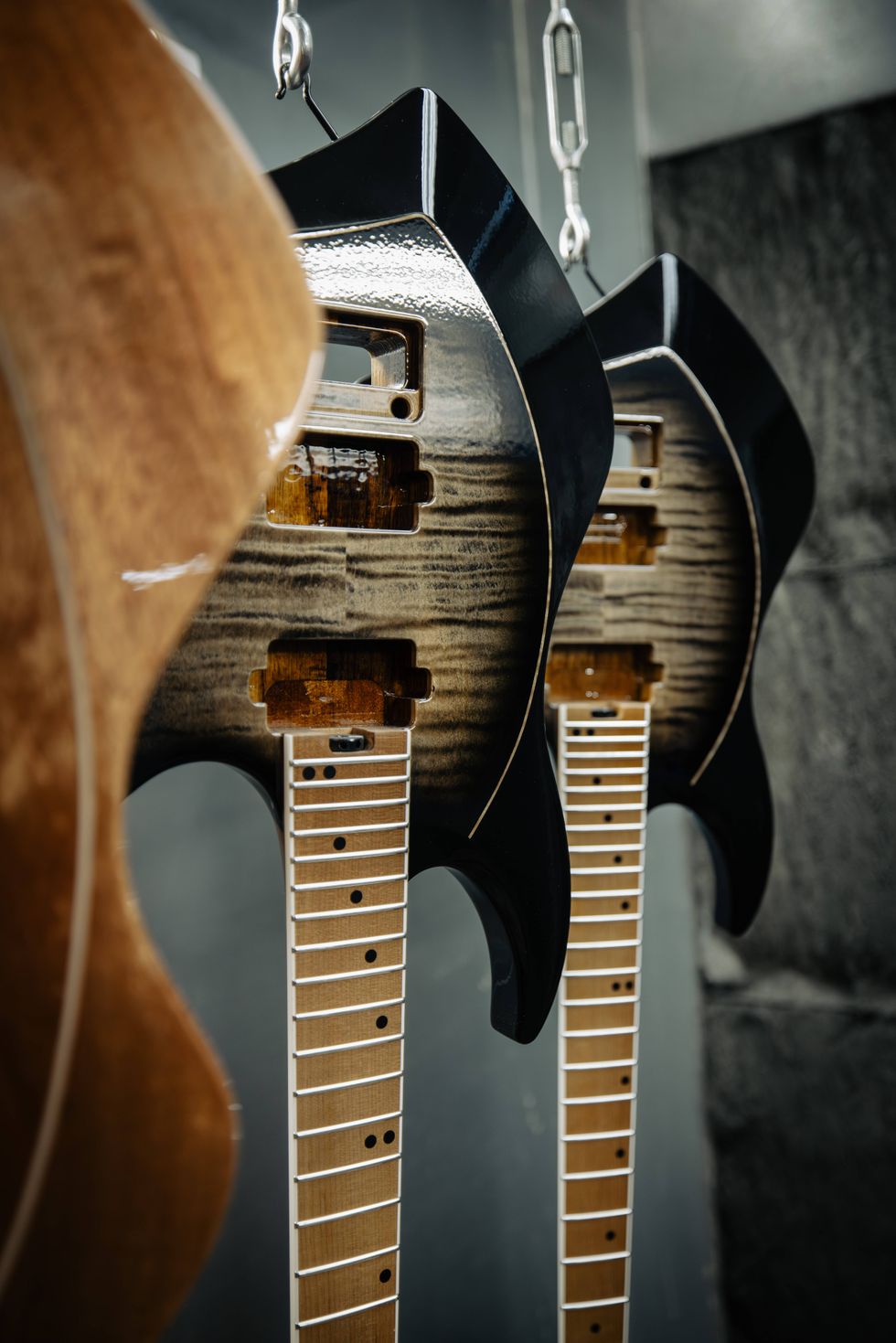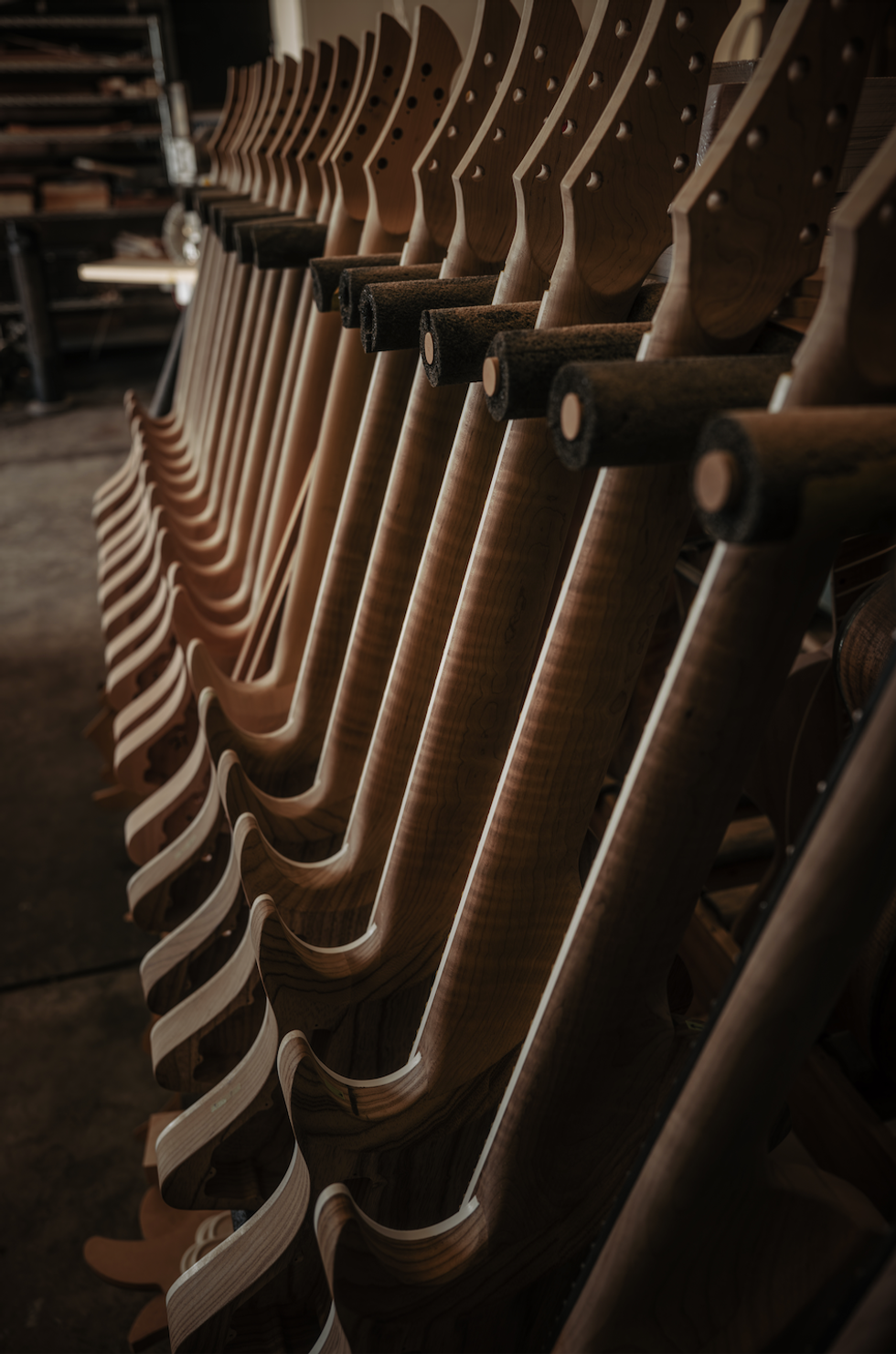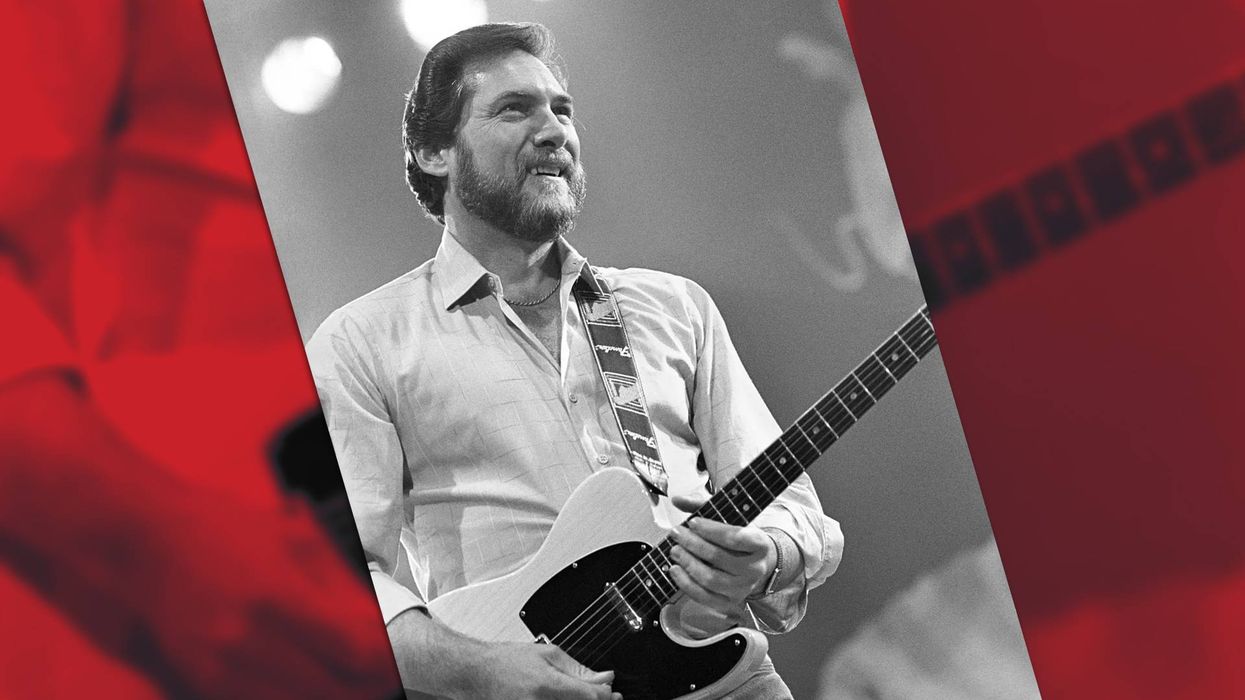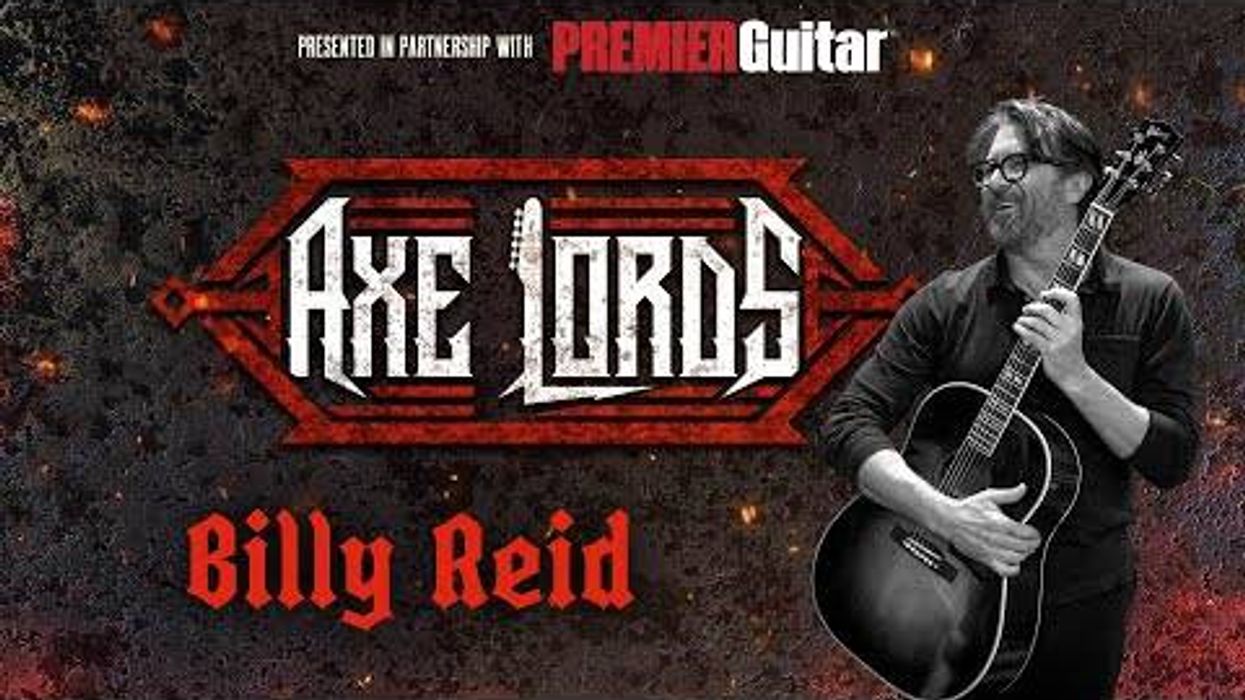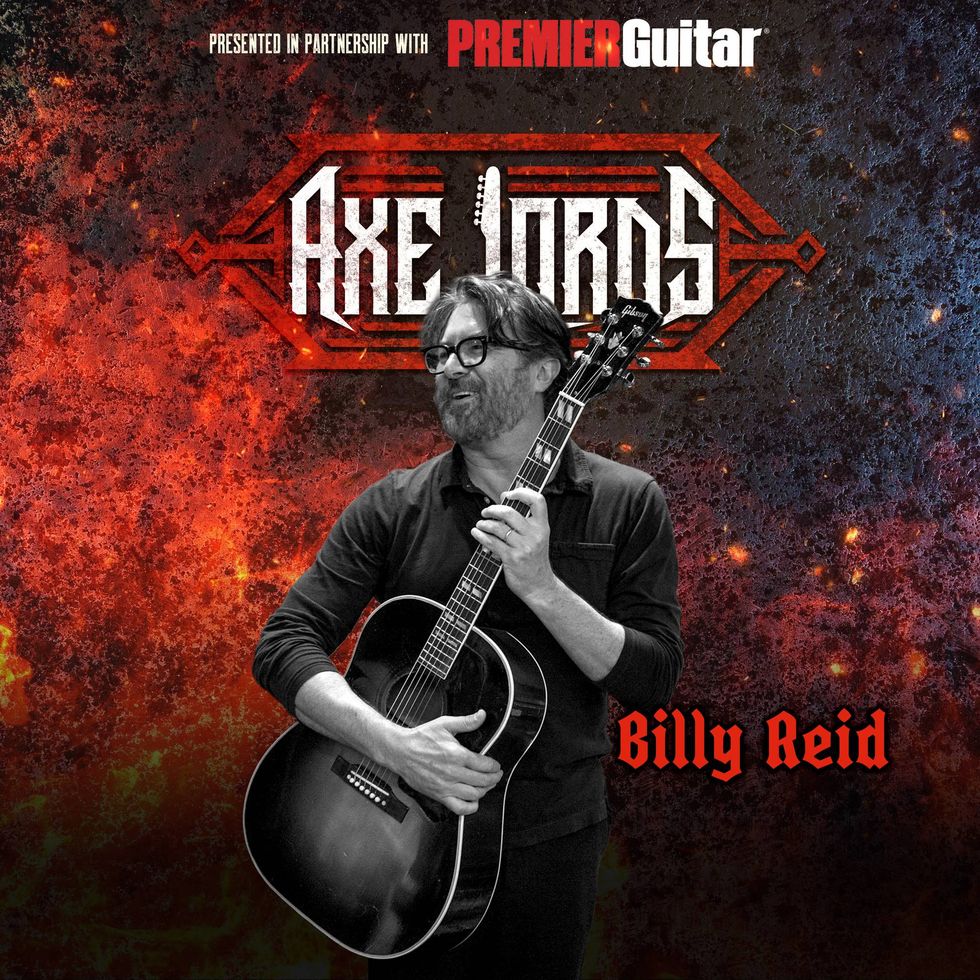Some very important events happened in John Petrucci’s life in 2024. He celebrated an enormous milestone with his bandmates in prog-metal behemoth Dream Theater: They’ve been a band for 40 years. Many bands aren’t destined to last a single decade, let alone four. It’s a titanic personal and artistic achievement. And yet, that anniversary paled in significance next to another major development: The band wrote and created a new full-length record with founding drummer Mike Portnoy, who had been absent from Dream Theater since 2010.
The news of Portnoy’s reunion with Dream Theater rocked the metal world. Over the years, whiffs of acrimony and hurt feelings suggested Portnoy’s return to the band might be a pipe dream. But in October 2023, the band revealed that they had all independently reconciled with Portnoy, a process that culminated backstage at New York’s Beacon Theater in 2022. Portnoy attended Dream Theater’s show at the venue and met up with the band afterward. It was the first time he’d seen vocalist James Labrie in 10 years. Within seconds, 13 years melted away in the warmth of camaraderie.
“The gear was all set up and we sat there and started playing. It was magic. It was like we never missed a beat.”
A few months after the announcement of Portnoy’s return, he and bandmates Labrie, Petrucci, bassist John Myung, and keyboardist Jordan Rudess convened at the recently renovated Dream Theater HQ, their longtime creative hideout and recording studio in Long Island, to begin to create new music. Petrucci, speaking over the phone from Brazil during Dream Theater’s December 2024 tour, remembers that period fondly. “From the moment that we all stepped in the studio in February, the gear was all set up and we sat there and started playing,” he says. “It was magic. It was like we never missed a beat.”
After shaking off the cobwebs, the first song they wrote together was “Night Terror”—“if that gives you any indication of the energy and vibe and mood that we were in,” quips Petrucci. It’s heavy, riffy, aggressive, and progressive, a capsule of 13 years in just shy of 10 minutes. “We let that all out in the first couple of weeks of just being together,” Petrucci continues. “It was wonderful and the creative juices just flowed the way they always did. There was great brotherly chemistry between all of us.”
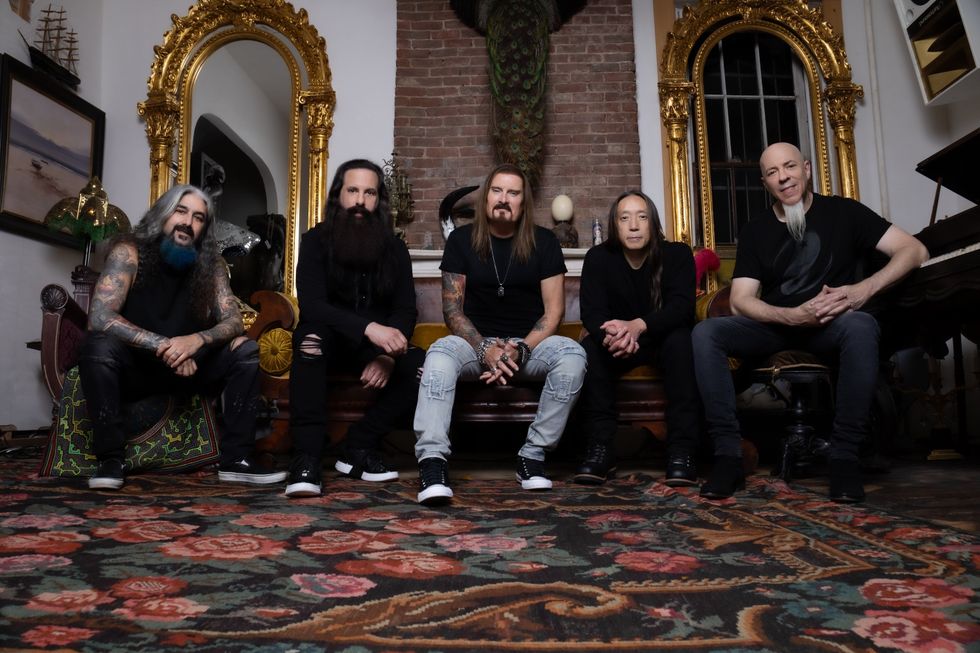
Last year, Dream Theater celebrated their ruby anniversary as a band. Four decades on, they’re still exploring the dark corners of what happens when we sleep.
The band continued to create together as they’d always done. They had some concrete ideas: They wanted to make a concept album, and it had to be heavy and riff-centric. Petrucci, who produced the record, was intrigued by parasomnia, a medical concept which refers broadly to any unusual sleep pattern, like sleepwalking, nightmares, insomnia, sleep paralysis, and more. He hadn’t experienced those nocturnal issues (the worst he deals with is snoring), but he began deep research into them. A path had opened up. “That creative part of me just wakes up, and then that turns into it also being musically creative, lyrically creative, visually creative,” says Petrucci.
This is how Parasomnia, Dream Theater’s 16th studio record, came to exist. Engineered and mixed by Andy Sneap, the concept album comprises a collection of suites and vignettes that center on various sleep disturbances, opening with “In the Arms of Morpheus,” a slowly building soundscape that sets the scene for all that follows. It soundtracks someone getting ready for bed and falling asleep, and just as they’re drifting into a dreamstate, a musical theme starts to creep in. It heightens and gets weird before exploding into the full chaos that gives way to “Night Terror,” the nine-minute-plus epic. Petrucci’s playing on this song alone is staggering: There’s the classic, open-string beginner riff, then vintage, hyper, ’80s-metal single-note melody work, then a truly brain-melting, lightning-fast solo that leaves your jaw open.
True to Dream Theater lineage, there are pieces of the record that feel ready to soundtrack alien drag races on Mars next to swanky sections of jazzy, hard-rocking funk-blues, like on “A Broken Man.” Petrucci slips in and out of modes and scales like a chameleon changing its colors, each sounding as lived-in and natural as the last. His fingers just seem to know where to go. His only reprieve is the funereal interlude “Are We Dreaming?” which prepares us for the power ballad “Bend the Clock” and the devastating, scorched earth closer: “The Shadow Man Incident.”
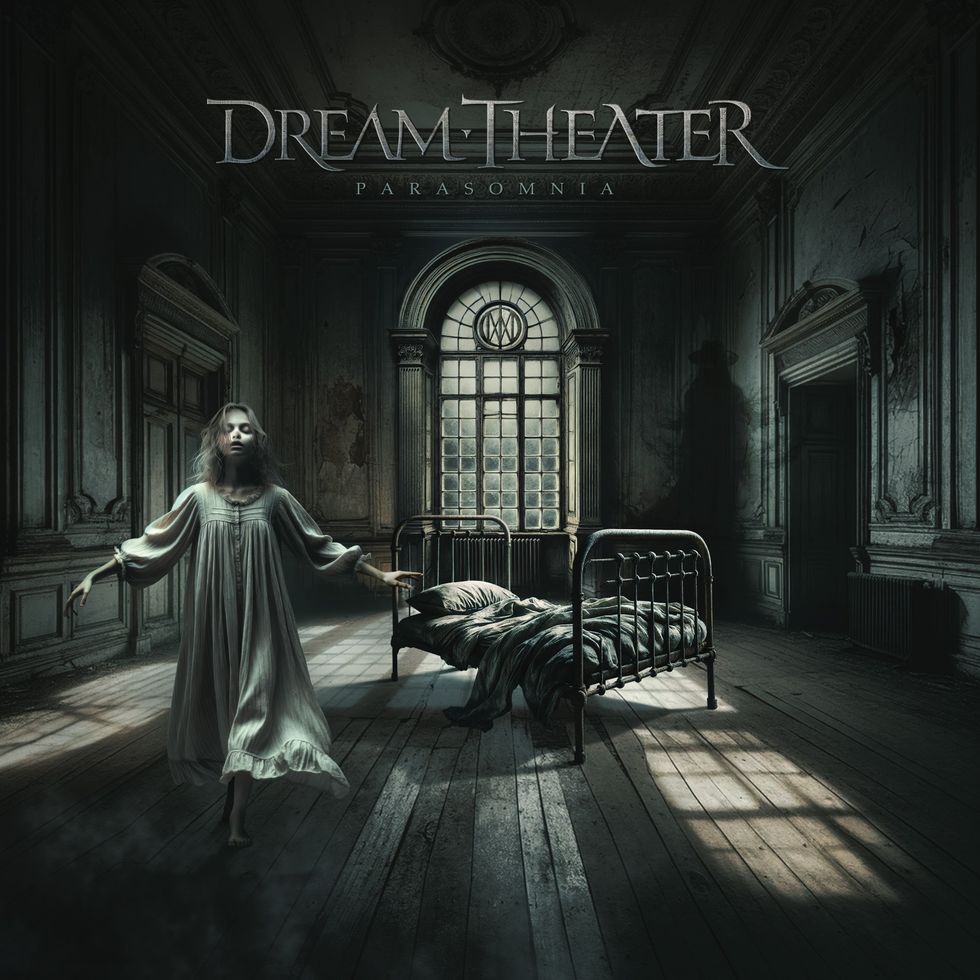
Parasomnia is Dream Theater’s 16th studio record, and their first since reuniting with founding drummer Mike Portnoy.
“It’s wacky,” says Petrucci about the phenomena behind that song’s title. If you’re not familiar, “the shadow man” is a colloquial name given to a figure that appears during some episodes of sleep paralysis. People around the world have reported a similar apparition visiting them while they’re experiencing sleep paralysis—but there’s no scientific consensus for what causes the similar visions.
“There’s something in the human brain that is unaccounted for or whatever that must be producing that, that repeated experience,” continues Petrucci. “You start doing all this research and going down rabbit holes online. You’re like, ‘Wow, for centuries, in every culture and civilization, the same thing has been happening. What is this?’ It definitely explores the depths of the human mind, but it reminds me of any sort of topic that holds your interest in a weird way, like UFOs. A song like ‘The Shadow Man Incident’ is a long, epic piece of music that gives you the backdrop and license to go into storytelling more.”
The goal was to take that storytelling beyond the normal confines of an LP—or, at least, what we think of as an LP in the streaming age. “What we decided to do was to make the album kind of like a Dark Side of the Moon listening experience,” explains Petrucci. “Our hope is that people will get this record, turn down the lights, get together with some friends for a drink or whatever you do, and just listen to the whole thing like you’re watching a movie. It’s supposed to be an experience.”Petrucci even studied the music of composers like John Williams to get a bead on how to create epic, cinematic feelings in music. He displayed his research to his bandmates in the form of creative direction for certain songs, likening the process to scoring a film. “The album or song topic presents certain imagery, and you want the music to match that imagery, so you have those tools in your toolbox, like, ‘Okay, I know what kind of chord movement or chordal sounds or modal things I can do that are going to make that,’ and it’s going to create that flavor as opposed to just going in and writing in the typical way that you would if you didn’t have that knowledge ahead of time.”
“With Mike rejoining the band, I wanted to lean into the nostalgic aspect in some of the recording process.”
A part of that soundscaping is what Petrucci describes as “ear candy”: spoken-word passages, or sound effects like clocks ticking and alarms ringing. These elements help build a more profound, immersive listen, but they only work if the songs are good, says Petrucci. “You can have all these sound connections and overdubs and voices, but if the songs suck, it’s not going to mean anything. No one’s going to want to listen to it.”
Knowing that the record would deal with all things eerie and creepy, Petrucci wanted to explore what types of tonalities could unsettle the listening experience. “For ‘Night Terror,’ I use the super Phrygian mode, which is like a mode of the Hungarian minor which has a very unresolved sound that creates a lot of tension,” he says. He also experimented with constructs like the Prometheus and Tristan chords. “That gives you that dreamy weird thing you hear in ‘In the Arms of Morpheus.’ That first 8-string chord is this crazy chord of all tritones that just makes it sound like you’re in a nightmare right away.”
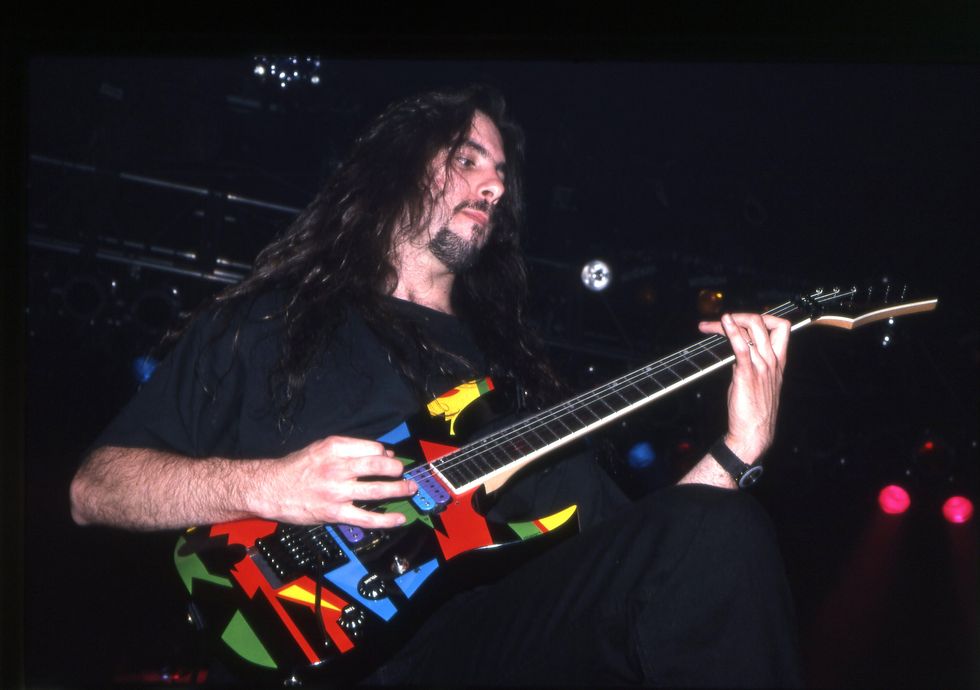
Petrucci, pictured here shredding in November 1994, broke out plenty of classic gear for the recording of Parasomnia to mark the reunion with Portnoy.
Photo by Frank White
Petrucci called on a range of tools old and new to bring Parasomnia to life. “With Mike rejoining the band, I wanted to lean into the nostalgic aspect in some of the recording process,” he explains. He used his 6-, 7-, and 8-string Ernie Ball Music Man Majesty guitars, in a spread of different tunings. He used his Mesa/Boogie JP-2C on everything except the record’s solos. For those, he busted out his old Mesas—a Mark III, IV, and IIC+ among them—for a shootout and wound up choosing the IIC+ that he used on old Dream Theater records (plus his own solo release, Suspended Animation). A Roland Jazz Chorus even clocked in for some cleans—a page Petrucci took from James Hetfield’s book.
The nostalgia didn’t end there. The band reached out to recording engineer Doug Oberkircher, who engineered all of the band’s records from 1992’s Images and Words through 2003’s Train of Thought, to purchase the Neve preamp used on those albums. All the guitars on Parasomnia were recorded through that preamp.
In many ways, a production this grand and intricate is familiar territory for the band. Petrucci and Dream Theater obviously have a penchant for art that is narrative, theatrical, and grand. But Parasomnia is specially weighted with circumstance and time.John Petrucci's Gear
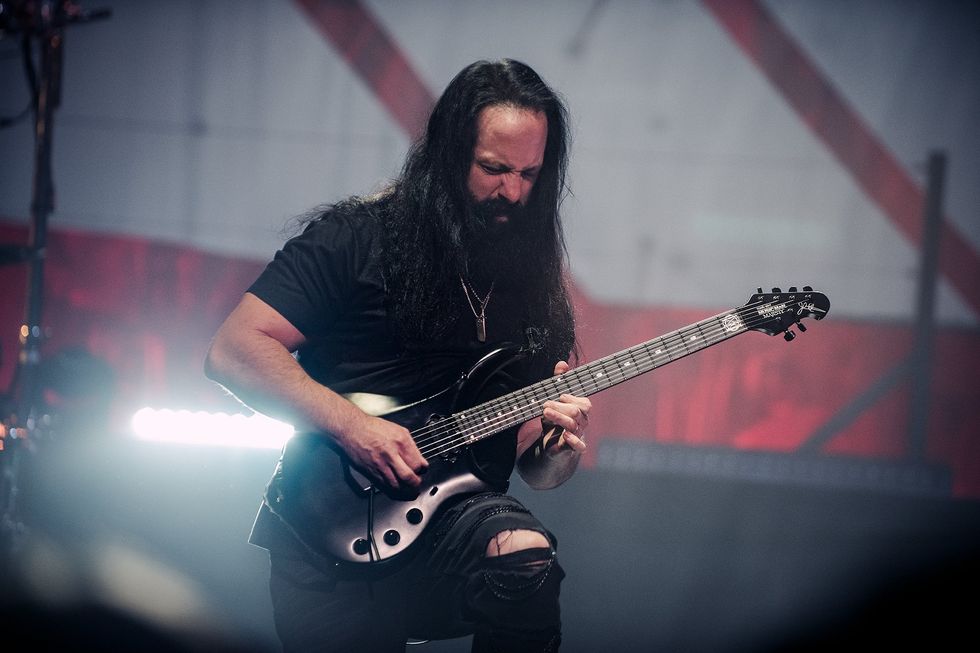
Petrucci and Dream Theater have managed an incredible feat: They’re just as excited about their music now as they were when they were teenagers.
Photo by Ekaterina Gorbacheva
Guitars
- Various Ernie Ball Music Man The Majesty 6-, 7-, and 8-string guitars with DiMarzio Dreamcatcher and Rainmaker pickups
Amps
- Mesa/Boogie JP-2C (rhythm parts)
- Vintage Mesa/Boogie Mark II C+ Simul-Class (lead parts)
- Roland JC-120 (clean parts)
- Mesa/Boogie 4x12 Rectifier Traditional Straight cabinet
Effects
- MXR Bass Compressor
- Boss CE-2W
- Boss DC-2W
- TC Electronic Dreamscape
- TC Electronic TC 2290
- TC Electronic Corona Chorus+
- MXR Stereo Chorus
- Keeley Blues Disorder
- Dunlop JP95 John Petrucci Signature Cry Baby Wah
- MXR Custom Audio Electronics MC403 Power System
Recording
- Neve 1093 Pre/EQ
- API 3124MV
- Solid State Logic PURE DRIVE OCTO
- sE Electronics VR2 + Mojave Audio MA-D (rhythm parts)
- sE Electronics SE4400a + Royer Labs R-121 (lead parts)
- Royer Labs R-121 in stereo (clean parts)
- sE Electronics RNR1 (mid room)
- sE Electronics RNT in OMNI (far room)
- Waves H-Delay Analog Delay Plugin
- Soundtoys EchoBoy
- Soundtoys MicroShift
- Soundtoys Crystallizer
- D16 Group Audio Software Repeater
- Valhalla DSP VintageVerb Plugin
- Valhalla DSP ValhallaRoom Reverb Plugin
- Radial ProRMP
- Radial J48
- EBow
Strings & Picks
- John Petrucci signature Dunlops
- Ernie Ball .10 gauge electric sets
“John Myung and I met when we were in middle school, so we were like 12, and I remember everything about us playing together, going over to each other’s houses after school and playing every Iron Maiden song there ever was, going to Berklee and meeting Mike when we were 18, forming the band,” says Petrucci. “Here we are, it’s 40 years later. How the hell does that happen? But the great thing is to still be playing with my brothers and my buddies, and still making music together that we’re just as excited about as we were when we were 18. It’s all we ever wanted to do.”
All of this history isn’t just window dressing. It comes out in Petrucci’s playing, too: It’s all one, long story. “By the time I was 16 or 17, I had a handle on the kind of style of player I wanted to be, and those original elements are still there and will always be there,” says Petrucci. “But now, 40 years later, there’s still new things coming in. Even on the new album, there’s things I never did before. We’re playing these shows and I’m trying to master this stuff live in front of an audience and see if I can pull it off under pressure. The challenge of it is just as much as it was when I was a teenager. I love it.
“It’s a continuing experiment,” Petrucci continues. “As you develop new techniques and go down new roads of playing, all of a sudden you realize you abandoned some older techniques, then you go back and rediscover those things, and through the process of rediscovering the old things you used to do, all of a sudden you could do some stuff that you never were able to do before. It’s like something that’s living. It’s a living experiment of guitar playing. It’s just forever inspiring.”
YouTube It
Last year marked Dream Theater’s 40th anniversary as a band, and the official Dream Theater fan club caught up with the group before their gig in Oslo to see how they brought the milestone tour to life.


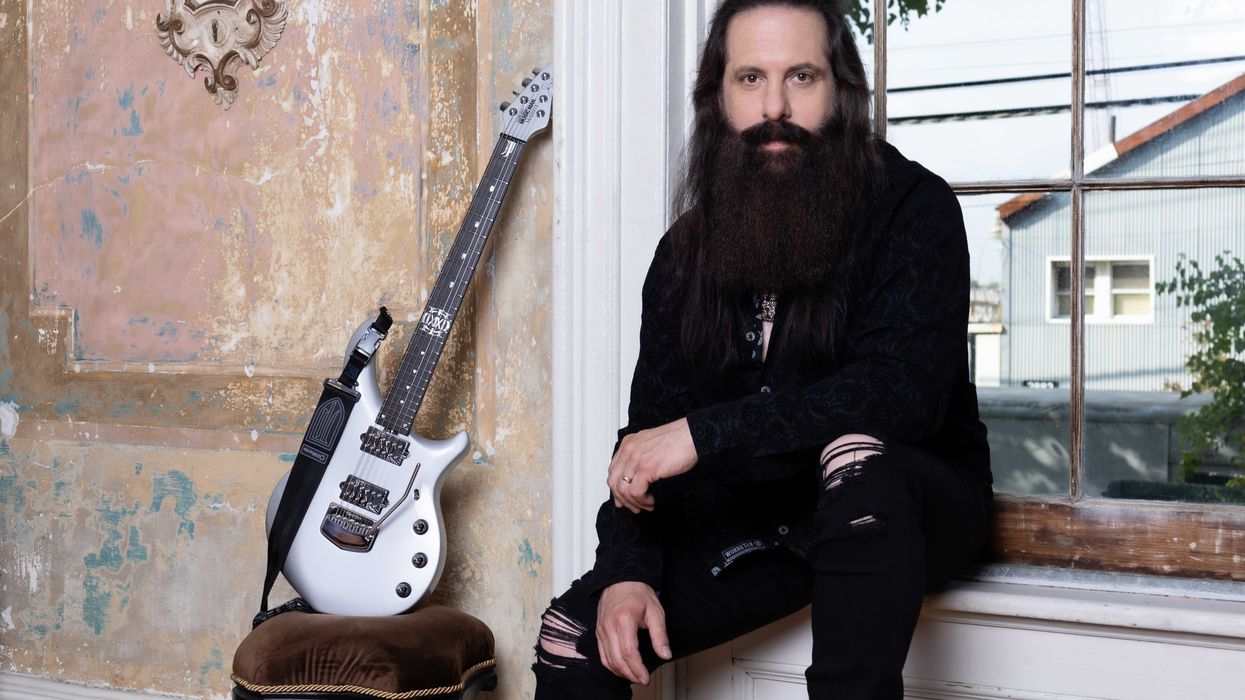

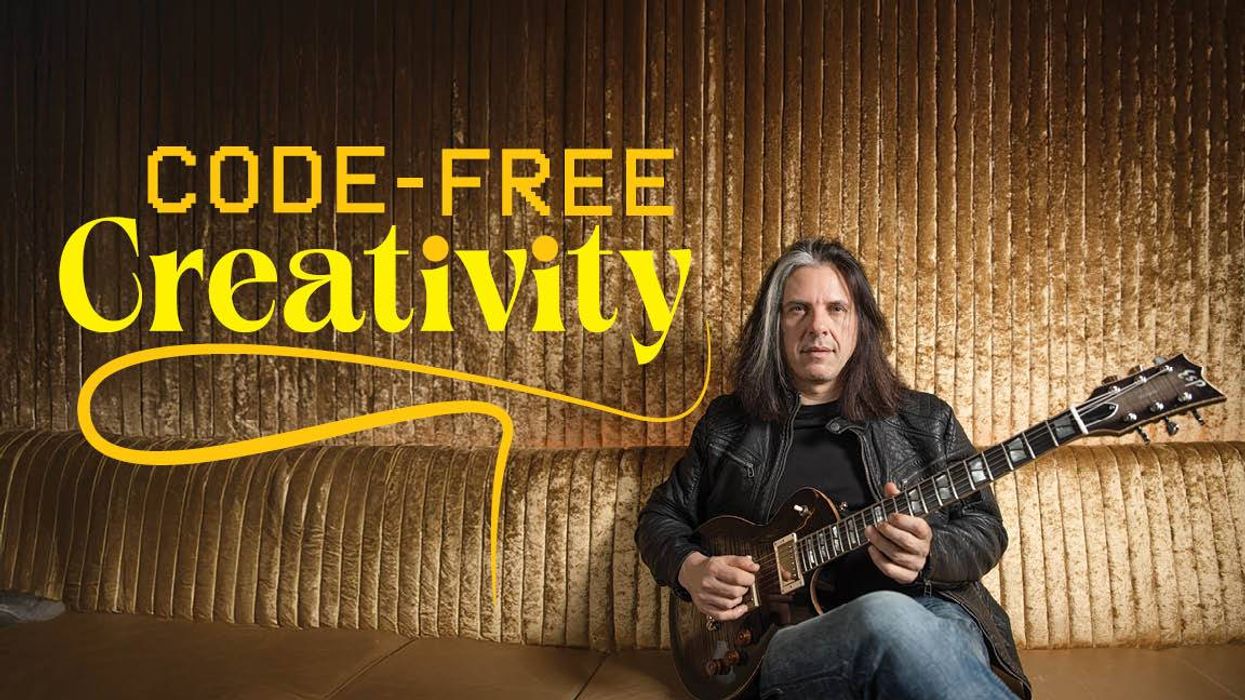
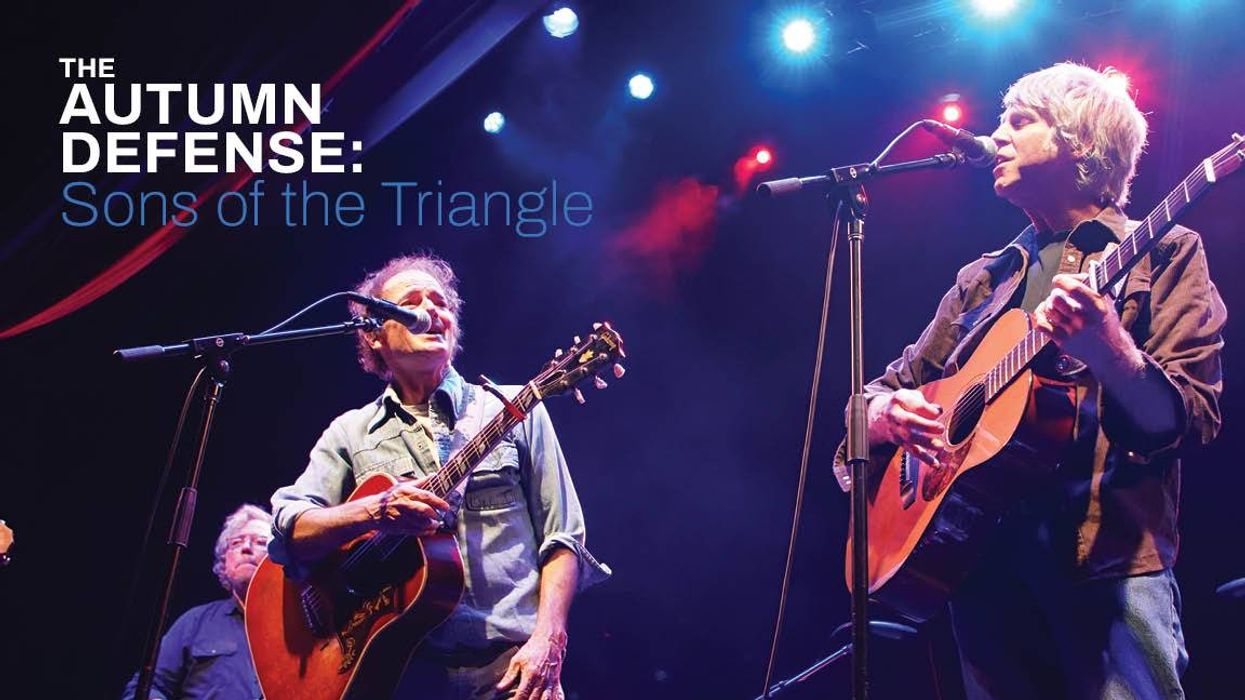
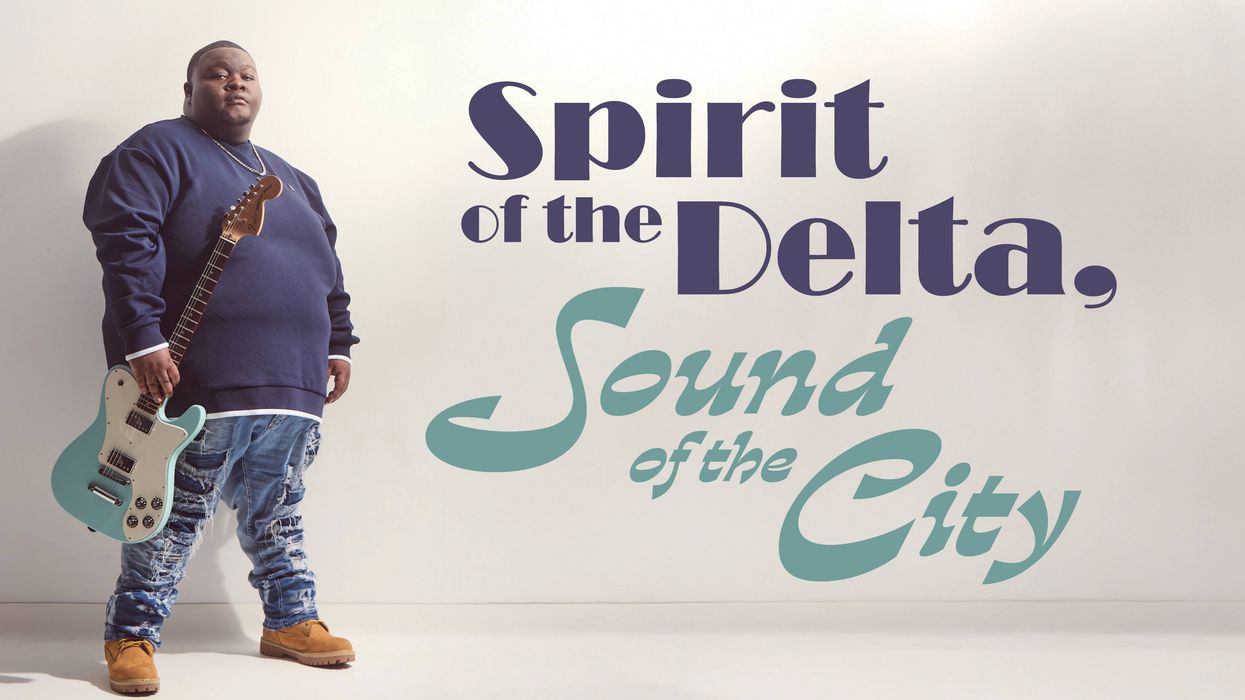
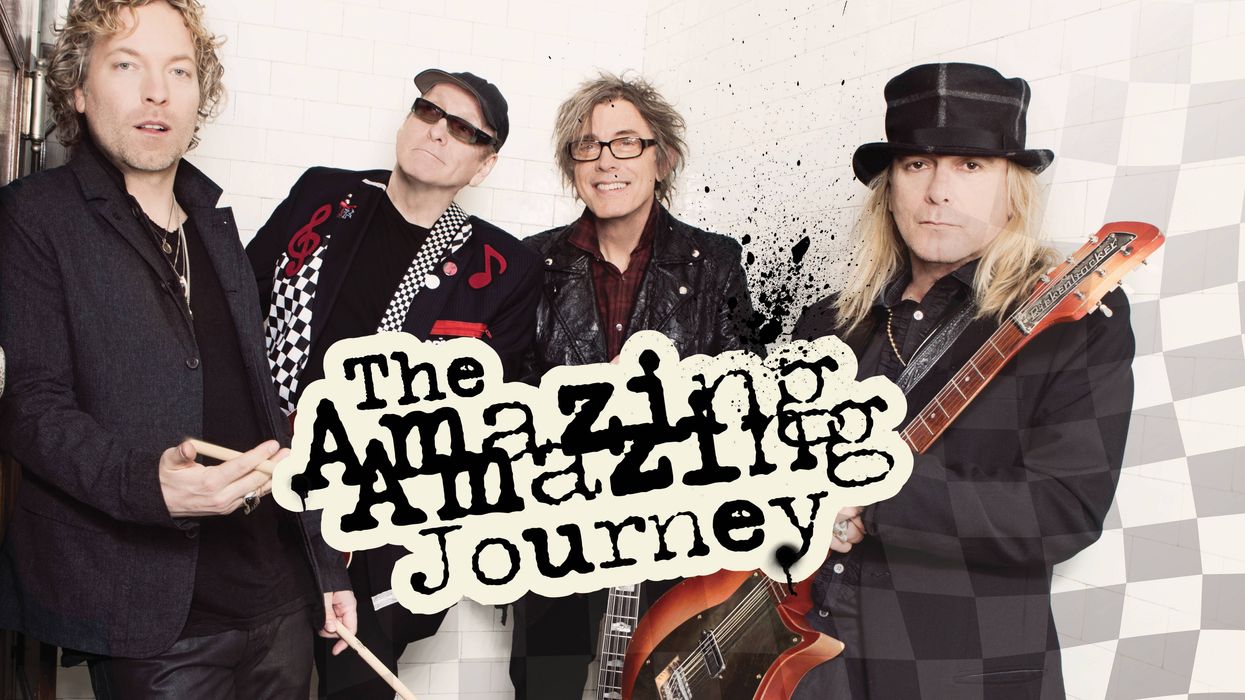
![Rig Rundown: Russian Circles’ Mike Sullivan [2025]](https://www.premierguitar.com/media-library/youtube.jpg?id=62303631&width=1245&height=700&quality=70&coordinates=0%2C0%2C0%2C0)












